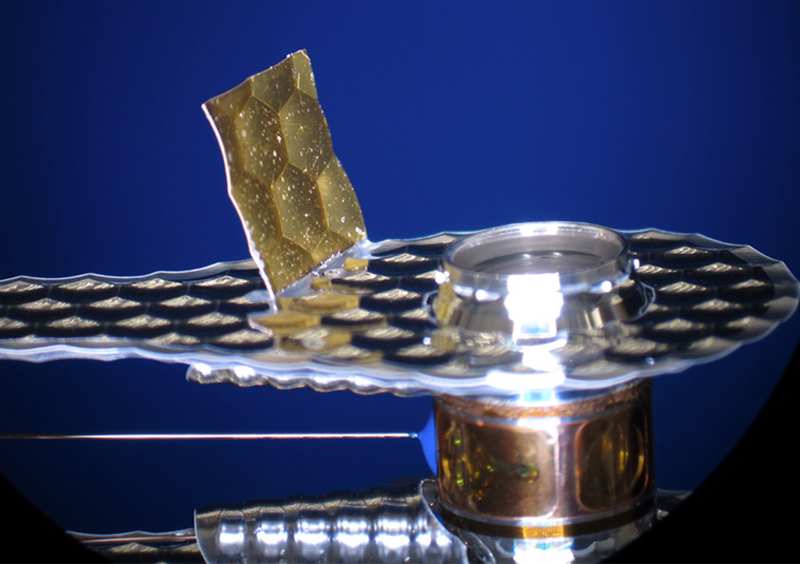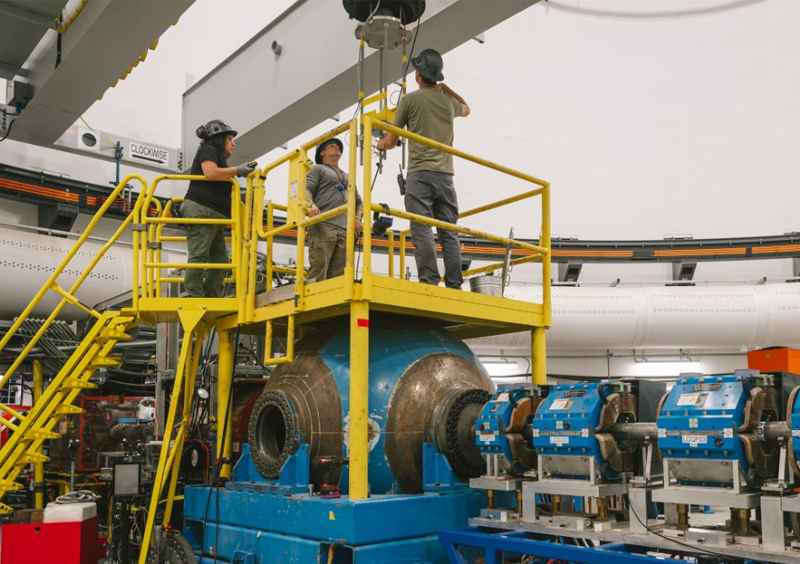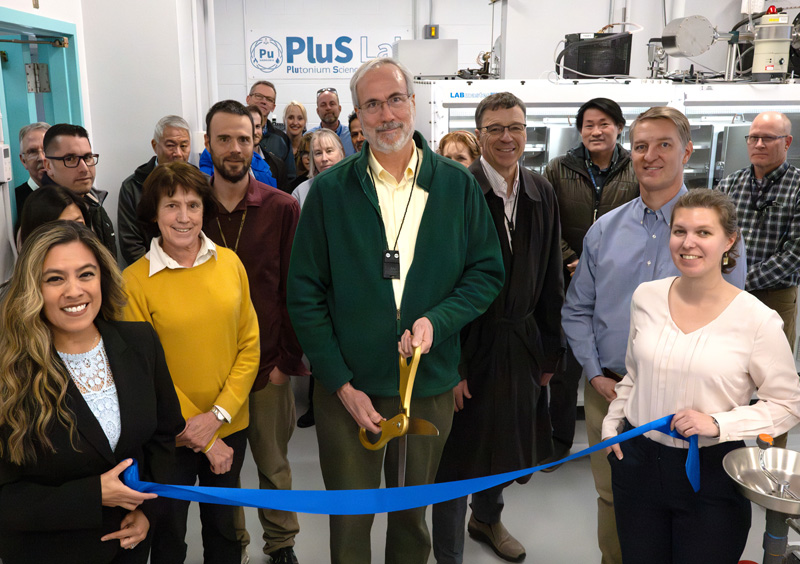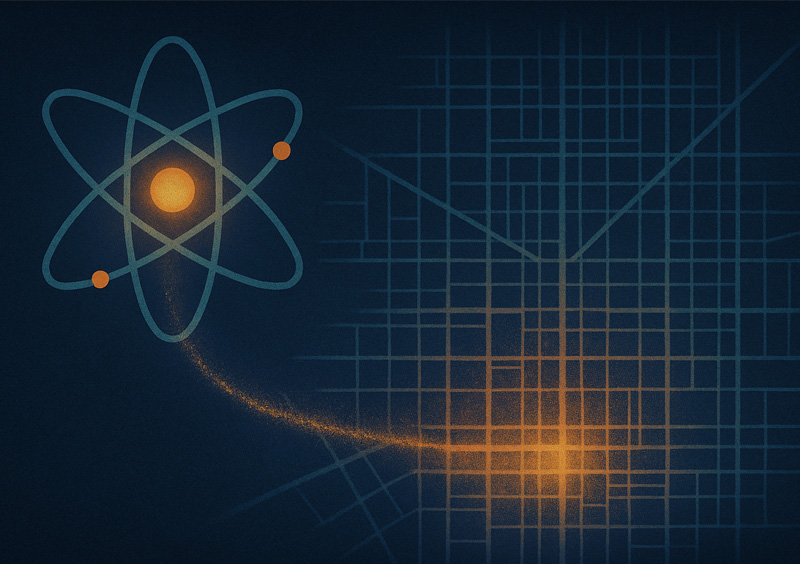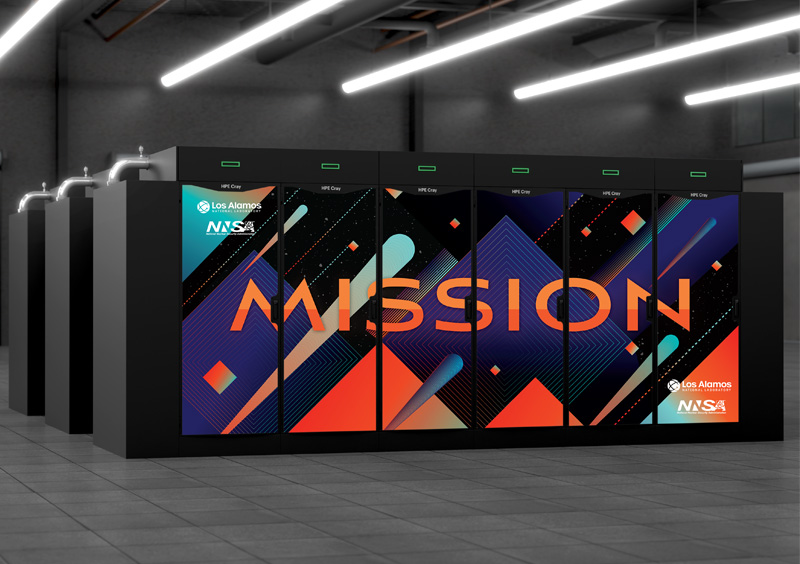A Los Alamos National Laboratory-led team working in conjunction with Lawrence Livermore National Laboratory (LLNL) has achieved ignition using the National Ignition Facility. The team conducted an experiment June 22 that generated a yield of 2.4 +- 0.09 megajoules of energy and created a self-sustaining feedback loop called a “burning plasma.”
“This shows how well our designs can create fusion ignition conditions to address key stockpile stewardship questions,” said Los Alamos physicist Joseph Smidt, the co-director of the LANL inertial confinement fusion program.
This was the first application of LANL’s Thinned Hohlraum Optimization for Radflow (THOR) window diagnostic system. The THOR window system leverages a modified version of LLNL’s ignition platform to produce extreme X-ray output. Scientists plan to use these X-rays to blast test materials to study how radiation flows through them or how much X-ray energy gets absorbed.
“This fantastic result is only possible because of the team of people working together,” said Ryan Lester, Lab physicist and THOR campaign lead. “We pulled this off in less than a year because of everyone’s commitment. We moved fast and we moved together, showing what can happen when the whole team is aligned and all-in.”
What is ignition?
Achieving ignition — producing more fusion energy than the amount of laser energy delivered to the target — creates extreme environments and allows scientists to study the behavior of materials under extreme plasma conditions that were previously impossible to achieve in a laboratory setting. Livermore first achieved ignition in 2022 and has replicated it several times since then. This recent achievement opens the door for studying new aspects of physics.
“This experiment marks a critical step in validating high-fidelity simulations and in demonstrating that ignition-scale performance can be achieved even with the THOR platform modifications,” Lester said.
In a National Ignition Facility fusion experiment, lasers are fired into a gold-coated cylinder called a hohlraum, which is just a few millimeters long and wide. The hohlraum holds a tiny capsule of deuterium and tritium — the fuel for fusion. The lasers hit the inner walls of the hohlraum creating a uniform bath of X-rays that drives the symmetrical implosion of the inner capsule, resulting in fusion ignition.
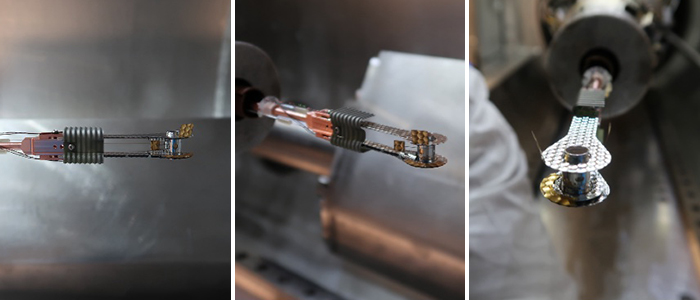
How is THOR different?
THOR experiments use a new LANL-designed hohlraum, based on the LLNL ignition design, but incorporating windows to allow some of the high-flux X-rays to escape. The x-rays provide a source to test how materials interact with high temperatures and radiation levels, a key question for nuclear weapon scientists. The challenge in this design was ensuring that adding windows to the hohlraum did not result in significant energy or implosion symmetry loss that would prevent fusion ignition from happening.
“Igniting capsule implosions are incredibly sensitive and any energy loss or perturbation can easily prevent ignition, which would eliminate the generation of the X-ray fluxes we want to use as a source,” LANL physicist Brian Haines said. Haines, who helped design the experiment and made significant contributions to x-RAGE — LANL’s pivotal computer code used to enable the modeling of hohlraums and capsule implosions — said now that they achieved ignition with a THOR design, the next steps will be to explore if the windows can be made more transparent and to design experiments that will attach to the THOR windows.
“This is a game-changing breakthrough that advances our fusion science and 3D modeling capabilities,” Smidt said. “Hitting this goal illustrates LANL’s expertise with this complex and exciting platform.”
LA-UR-25-27369
